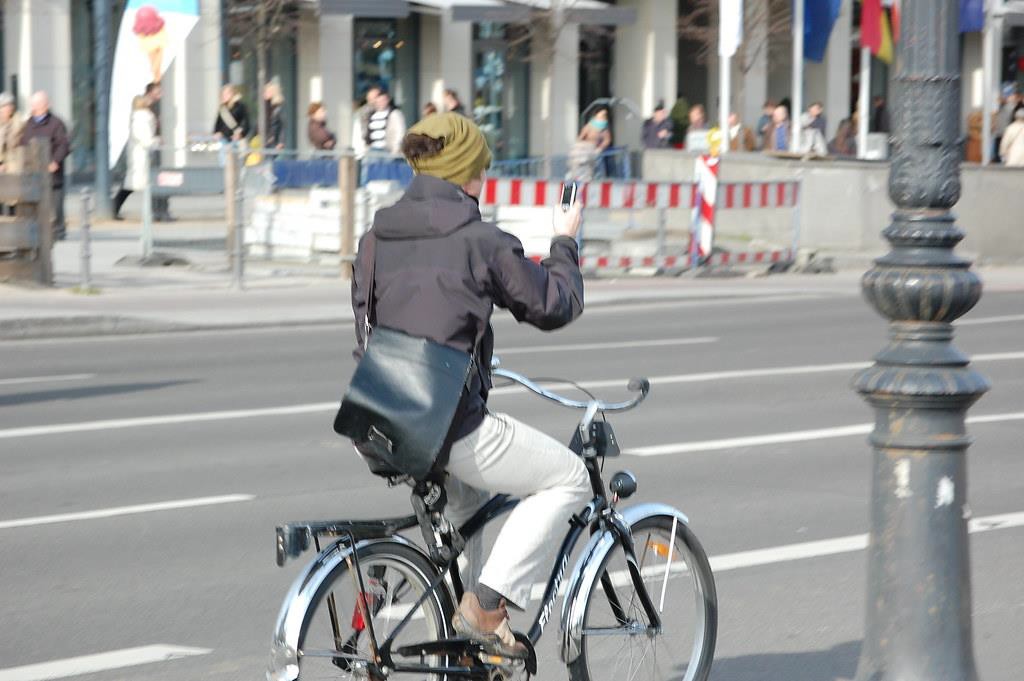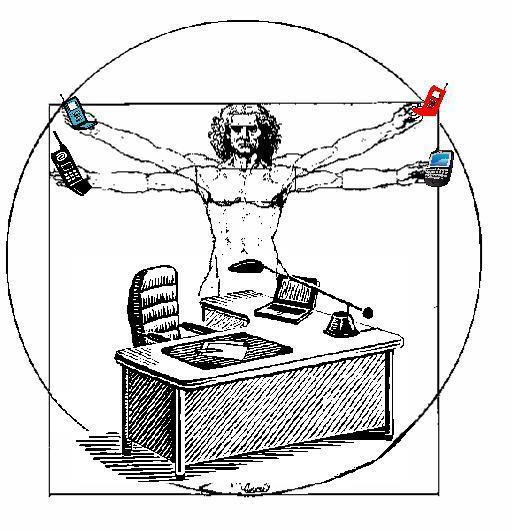4.4 Divided Attention and Multitasking
In spite of the evidence of our limited capacity, we all like to think that we can do several things at once. Some people claim to be able to multitask without any problem: reading a textbook while watching television and talking with friends; talking on the phone while playing computer games; texting while driving. The fact is that we sometimes can seem to juggle several things at once, but the question remains whether dividing attention in this way impairs performance.
Is it possible to overcome the limited capacity that we experience when engaging in cognitive tasks? We know that with extensive practice, we can acquire skills that do not appear to require conscious attention. As we walk down the street, we don’t need to think consciously about what muscle to contract in order to take the next step. Indeed, paying attention to automated skills can lead to a breakdown in performance, or “choking” (e.g., Beilock & Carr, 2001).
Divided Attention Tasks
In a classic study that examined this type of divided attention task, two participants were trained to take dictation for spoken words while reading unrelated material for comprehension (Spelke, Hirst, & Neisser, 1976). In divided attention tasks such as these, each task is evaluated separately in order to determine baseline performance when the individual can allocate as many cognitive resources as necessary to one task at a time. Then performance is evaluated when the two tasks are performed simultaneously. A decrease in performance for either task would suggest that even if attention can be divided or switched between the tasks, the cognitive demands are too great to avoid disruption of performance. (We should note here that divided attention tasks are designed, in principle, to see if two tasks can be carried out simultaneously. A related research area looks at task switching and how well we can switch back and forth among different tasks (e.g., Monsell, 2003). It turns out that switching itself is cognitively demanding and can impair performance.)
The focus of the Spelke et al. (1976) study was whether individuals could learn to perform two relatively complex tasks concurrently, without impairing performance. The participants received plenty of practice—the study lasted 17 weeks and they had a 1-hour session each day, 5 days a week. These participants were able to learn to take dictation for lists of words and read for comprehension without affecting performance in either task, and the authors suggested that perhaps there are not fixed limits on our attentional capacity. However, changing the tasks somewhat, such as reading aloud rather than silently, impaired performance initially, so this multitasking ability may be specific to these well-learned tasks. Indeed, not everyone could learn to perform two complex tasks without performance costs (Hirst, Neisser, & Spelke, 1978), although the fact that some can is impressive. Some researchers propose that unless a task is fully automated, “multi-tasking” doesn’t really exist; you are just rapidly switching your attention back and forth between tasks (resulting in the above-mentioned impaired performance).
Distracted Driving
More relevant to our current lifestyles are questions about multitasking while texting or having cell phone conversations. Research designed to investigate, under controlled conditions, multitasking while driving has revealed some surprising results. Certainly there are many possible types of distractions that could impair driving performance, such as applying makeup using the rearview mirror, attempting (usually in vain) to stop the kids in the backseat from fighting, fiddling with music playlists, trying to negotiate a handheld cell phone, a cigarette, and a soda all at once, eating a bowl of cereal while driving (!). But we tend to have a strong sense that we CAN multitask while driving, and cars are being built with more and more technological capabilities that encourage multitasking. How good are we at dividing attention in these cases?

Most people acknowledge the distraction caused by texting while driving and the reason seems obvious: Your eyes are off the road and your hands and at least one hand (often both) are engaged while texting. However, the problem is not simply one of occupied hands or eyes, but rather that the cognitive demands on our limited capacity systems can seriously impair driving performance (Strayer, Watson, & Drews, 2011). The effect of a cell phone conversation on performance (such as not noticing someone’s brake lights or responding more slowly to them) is just as significant when the individual is having a conversation with a hands-free device as with a handheld phone; the same impairments do not occur when listening to the radio or a book on tape (Strayer & Johnston, 2001). Moreover, studies using eye-tracking devices have shown that drivers are less likely to later recognize objects that they did look at when using a cell phone while driving (Strayer & Drews, 2007). These findings demonstrate that cognitive distractions such as cell phone conversations can produce inattentional blindness, or a lack of awareness of what is right before your eyes (see also, Simons & Chabris, 1999). Sadly, although we all like to think that we can multitask while driving, in fact the percentage of people who can truly perform cognitive tasks without impairing their driving performance is estimated to be about 2% (Watson & Strayer, 2010).
So, what can we do to combat failures of selected and divided attention in the real world? The short answer appears to be, “not much.” There is no magical elixir that will overcome the limits on attention, allowing you to notice everything (and that would not be a good outcome anyway). But, there is something you can do to mitigate the consequences of such limits. Now that you know about inattentional blindness, you can take steps to limit its impact by recognizing how your intuitions will lead you astray.
First, maximize the attention you do have available by avoiding distractions, especially under conditions for which an unexpected event might be catastrophic. The ring of a new call or the ding of a new text are hard to resist, so make it impossible to succumb to the temptation by turning your phone off or putting it somewhere out of reach when you are driving. If you know that you will be tempted and you know that using your phone will increase inattentional blindness, you must be proactive. Second, pay attention to what others might not notice. If you are a bicyclist, don’t assume that the driver sees you, even if they appear to make eye contact. Looking is not the same as seeing. Only by understanding the limits of attention and by recognizing our mistaken beliefs about what we “know” to be true can we avoid the modern-day consequences of those limits.
Attention Summary
It may be useful to think of attention as a mental resource that is needed to focus on and fully process important information, especially when there is a lot of distracting “noise” threatening to obscure the message. Our selective attention system allows us to find or track an object or conversation in the midst of distractions. Whether the selection process occurs early or late in the analysis of those events has been the focus of considerable research, and in fact, how selection occurs may very well depend on the specific conditions. With respect to divided attention, in general, we can only perform one cognitively demanding task at a time, and we may not even be aware of unattended events even though they might seem too obvious to miss (see, e.g., demonstrations of change blindness and inattentional blindness). This type of inattention blindness can occur even in well-learned tasks, such as driving while talking on a cell phone.
Understanding how attention works is clearly important, even for our everyday lives.


